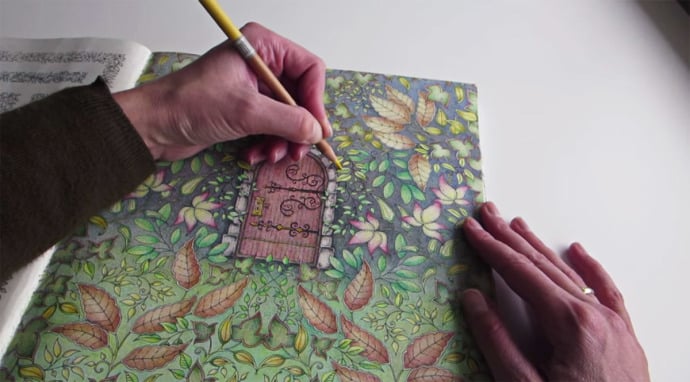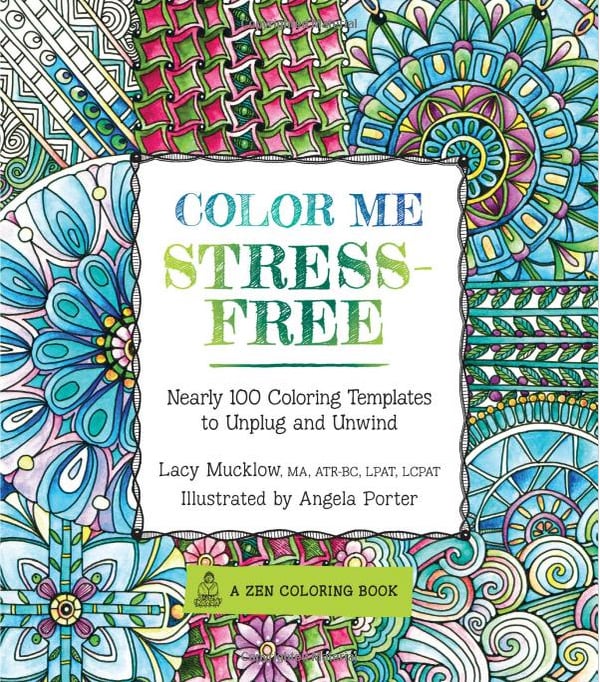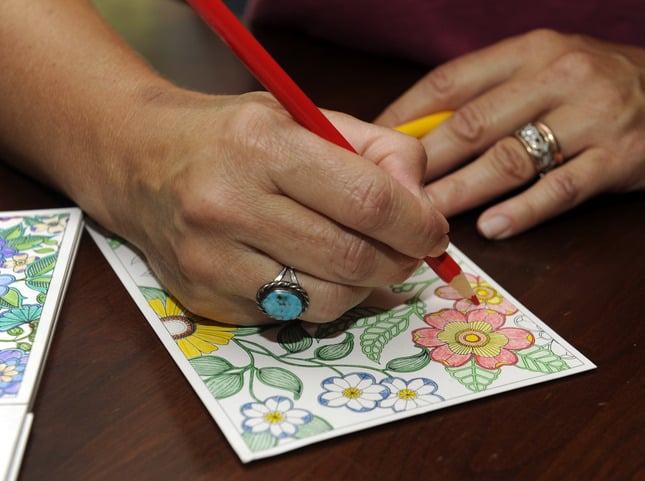As an art therapist and author of adult coloring books, I anticipated this subject being broached at some point, especially since some coloring books are titles with "Art Therapy" in their name. Coloring most definitely has its benefits, in allowing people to de-stress and calm themselves in an easily accessible manner. But as I have made clear in many interviews, coloring is good for everyday maintenance, but it is not clinical art therapy and is not a substitute for professional help when needed.
ART WORLD
Sarah Cascone, Friday, August 7, 2015

An adult coloring book.
Photo: Passion for Pencils, YouTube screenshot.
Experts are questioning the therapeutic benefits of adult coloring books, one of 2015's biggest and perhaps most-unexpected art trends, widely touted for its stress-relieving benefits.
According to Jo Kelly, president the Australian and New Zealand Arts Therapy Association, however, adult coloring books are no replacement for an in-the-flesh art therapist.
"An arts therapist is a qualified, trained individual who helps people and uses creative processes," insisted Kelly to ABC. She admits that by encouraging people to set time aside for their own enjoyment, adult coloring books have their benefits, "but to sort of suggest that it's a sort of creative art expression, you're actually using other people's designs—why not make your own?"

Color Me Stress Free.
Photo: courtesy Race Point Publishing.
Publisher's Weekly traces the current popularity of coloring books for adults back to 2012, when Art-thérapie: 100 Coloriages anti-stress, by Hachette Pratique, was published in France. The first book to really hit the mainstream, however, was Johanna Basford's Secret Garden: An Inky Treasure Hunt & Coloring Book, currently Amazon's number one best-seller in self-help books.
The follow-up from the so-called "queen of coloring," Enchanted Forest, was released in February, and a third volume, Lost Ocean, is slated for an October release. Even fantasy author George R.R. Martin is getting in on the action, with plans to release a Game of Thrones coloring book.
"We've never seen a phenomenon like it in our thirty years of publishing. . . . Just can't keep them in print fast enough," Lesley O'Mara, the managing director Michael O'Mara Books, which has no less than 24 adult coloring book titles, told the New Yorker.

An illustration from Johanna Basford's Enchanted Forest.
Photo: Johanna Basford.
The San Jose Mercury News recently counted coloring books as part of an "ever-growing list of kid things co-opted by adults (video games, mini golf, Legos, Pez dispensers)," but adult coloring books are often marketed based on their therapeutic value.
There is Color Therapy: An Anti-Stress Coloring Book, and Adult Coloring Book: Stress Relieving Patterns, Amazon's top seller in Graphic Design Color Use. The Zen Coloring Book series, which includes Color Me Happy and Color Me Calm, is actually authored by art therapist Lacy Mucklow, with art by Angela Porter.
"We imagined the books would appeal to adults looking to relax. But we never expected the responses we've received from people battling serious medical conditions," editorial director Jeannine Dillon told PW of the Zen series, which sold over 275,000 copies over just six months this year.
Susanne Fincher, art therapist and author of the Coloring Mandalas series, sees coloring books as a useful supplement to art therapy treatment. They "can empower a client to manage thoughts and feelings on their own with the positive activity of coloring, instead of, for example, overeating or abusing substances," she said to CNN.
"We imagined the books would appeal to adults looking to relax. But we never expected the responses we've received from people battling serious medical conditions," editorial director Jeannine Dillon told PW of the Zen series, which sold over 275,000 copies over just six months this year.
Susanne Fincher, art therapist and author of the Coloring Mandalas series, sees coloring books as a useful supplement to art therapy treatment. They "can empower a client to manage thoughts and feelings on their own with the positive activity of coloring, instead of, for example, overeating or abusing substances," she said to CNN.

Coloring a postcard by adult coloring book queen Johanna Basford.
Photo: Susan Tripp Pollard, courtesy Bay Area News Group.
The PTSD Survivors of America, in particular, have embraced the trend, hosting a nationwide "Color Across America for PTSD Awareness" event on August 2, National Coloring Book Day.
Erin Maynard, the organization's president, credits coloring books with counteracting the hyperactivity of the region of the brain called the amygdala, which controls the fear response. "Coloring actually reduces the activity of the amygdala, so that's part of the reason that it helps calm you down," she told the Lancaster Bee.
"Adult coloring is absolutely a growing trend and consumers are really taking to the idea," Matthew Lore, of the Experiment publishing group, which released The Mindfulness Colouring Book in January, said to CNN. "Not only is it calming and good for your health, it's just fun!"
But how much can coloring books really do for your mental well-being?
"It's a nice technique really that some art therapists sometimes use as a way to get started with someone, but art therapy is a lot more involved than that," Jane O'Sullivan, who runs the masters in mental health program at the University of Queensland warned ABC. "I think if someone was to say coloring-in books are art therapy, [that] is not accurate."
Follow artnet News on Facebook.




